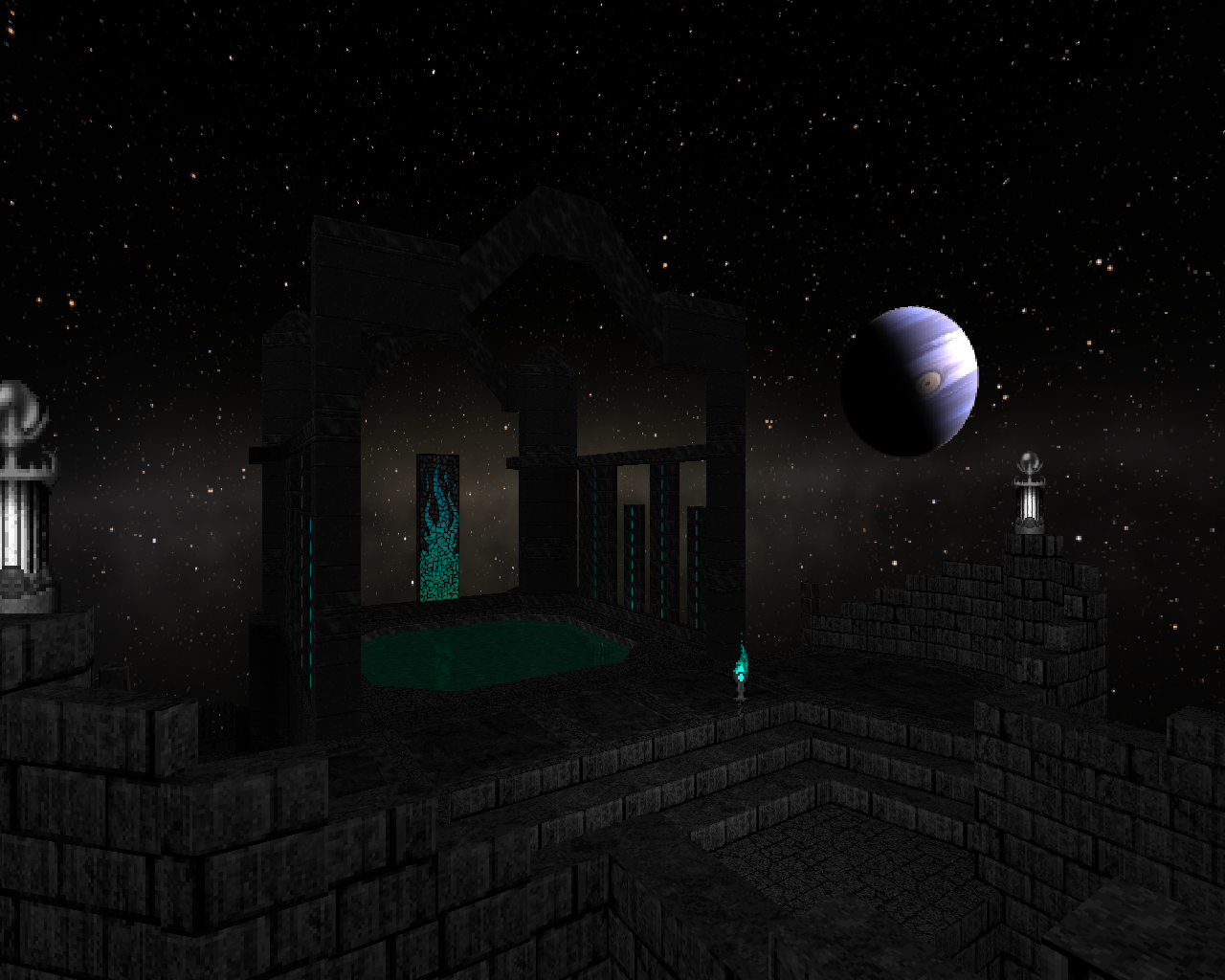-

-
Chapter 5:
When the Walls Fell
-
When Doom’s source code was released in 1997, Doom fans with programming knowledge immediately set out to make the game easier to work with and add new features for mappers to use. The source port explosion was well underway by 1998, which saw the earliest releases of the two most popular port families, Jim Flynn and Lee Killough’s Boom and its derivatives (nowadays typically PRBoom+) and Randi Heit’s ZDoom (which has since evolved into GZDoom and other, more specialized ports).
Why did these two ports end up winning out? Because their creators worked quickly, for one thing. Boom was the first really complete source port, and it offered a lot of things that people wanted as mappers and players. ZDoom, which was quite a bit more complex, pushed many features out the door quickly due to the demand from players and the competition from other ports. This meant a fair number of snags along the road, including compatibility issues between earlier ZDoom maps and later versions of the port—but it also meant that the demands of mappers were consistently being met. Since Boom was so popular, ZDoom also had a tremendous advantage in being Boom-derived and Boom-compatible. From a practical standpoint, it makes sense for players and mappers to be able to rely on a single mid-level source port and a single advanced source port. From a player’s perspective, you either want to be able to play most releases in one port (Boom) and advanced releases in another (ZDoom), or to simply play everything in a single port (ZDoom). From a mapper’s perspective, you want your work to be easily accessible and for your chosen port to be continuously updated to make your life easier. Ultimately, once their basic needs had been met, people didn’t want to juggle a bunch of different specialty ports, especially ones that were less developed.
If you read through the 10 Years of Doom Top 100 feature, you can see very clearly where the explosion of port-based maps happened, gathering steam through 1999 and dominating 2000 and the years beyond. It’s pretty easy to see why. Source ports were a huge deal for mappers—even the ones that simply removed the static engine limits and allowed mappers to put more on the player’s screen at once, but especially the ones that added a host of new features. Boom was designed primarily around its user-friendly mapping format, which is similar to classic Doom but provides a lot more flexibility in what types of actions mappers can use, not to mention some of the more low-level advanced features like transparency and scrolling floors. By contrast, ZDoom went all out with adding features from more modern games, such as particle fountains, slopes, and colored sector lighting. At the time, it must have seemed as though all the rules had been unwritten; Doom level design became an arena where anything was fair game, and ZDoom in particular offered possibilities that were akin to an early game making program. The huge number of port releases in the early years show how excited everyone was about crafting mad science with the boatload of new options available. Early releases like the KZDoom series with its ACS scripting and polyobjects, Assault on Tei Tenga with its hub progression, and Runaway Train and The Adventures of Massmouth with their goofy mission objectives and story-driven gameplay, inspired later mappers and began to establish tropes for the way features were used.
Source ports were a huge deal for mappers – especially the ones that added a host of new features
Boom mapping has always been largely integrated with more classic mapping styles—even early releases like DemoniZed, though they were certainly fed by the excitement over new port features, tended to use those features in a way that supplemented Doom’s core gameplay, rather than subverting or reimagining it. ZDoom, on the other hand, became its own subcommunity very early on, with its own ideas about what makes a game interesting that were very different from, and often clashed with, those of more classically minded players and mappers.
When it comes to ZDoom releases, it’s a bit tricky to talk about “influences” within the mapping community, because each release for the port has its own distinct feel and feature set compared to classic Doom releases, and because ZDoom mappers take so much of their inspiration from games outside of Doom. But even if there aren’t many lineages of direct stylistic influence, there are certainly schools of thought about how port features are used. One of the earliest and thickest branches on the evolutionary tree of ZDoom mapping deals with the uncanny, using port features to play with sensations of reality and unreality.
-
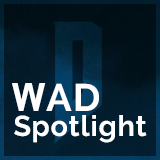 Void - Cyb (2003)
Void - Cyb (2003)
The Abyss Gazes Back
Supposing you could approach Void from the perspective of a Doom player in 2003, it would take your preconceptions about Doom, turn them upside down, shake out their pockets, and leave them in a confused heap on the floor, wondering what hit them. It wouldn’t waste any time doing it, either. The first hint of the uncanny comes right at the title screen, courtesy of the compressed XM music in place of what would normally be a MIDI track. It’s fairly common to use more advanced music formats these days, but at the time, if that simplified MIDI sound was ingrained in your mind, an intrinsic part of playing Doom maps, it would have struck you as…different. Maybe not astonishing, but certainly a little bit unreal.
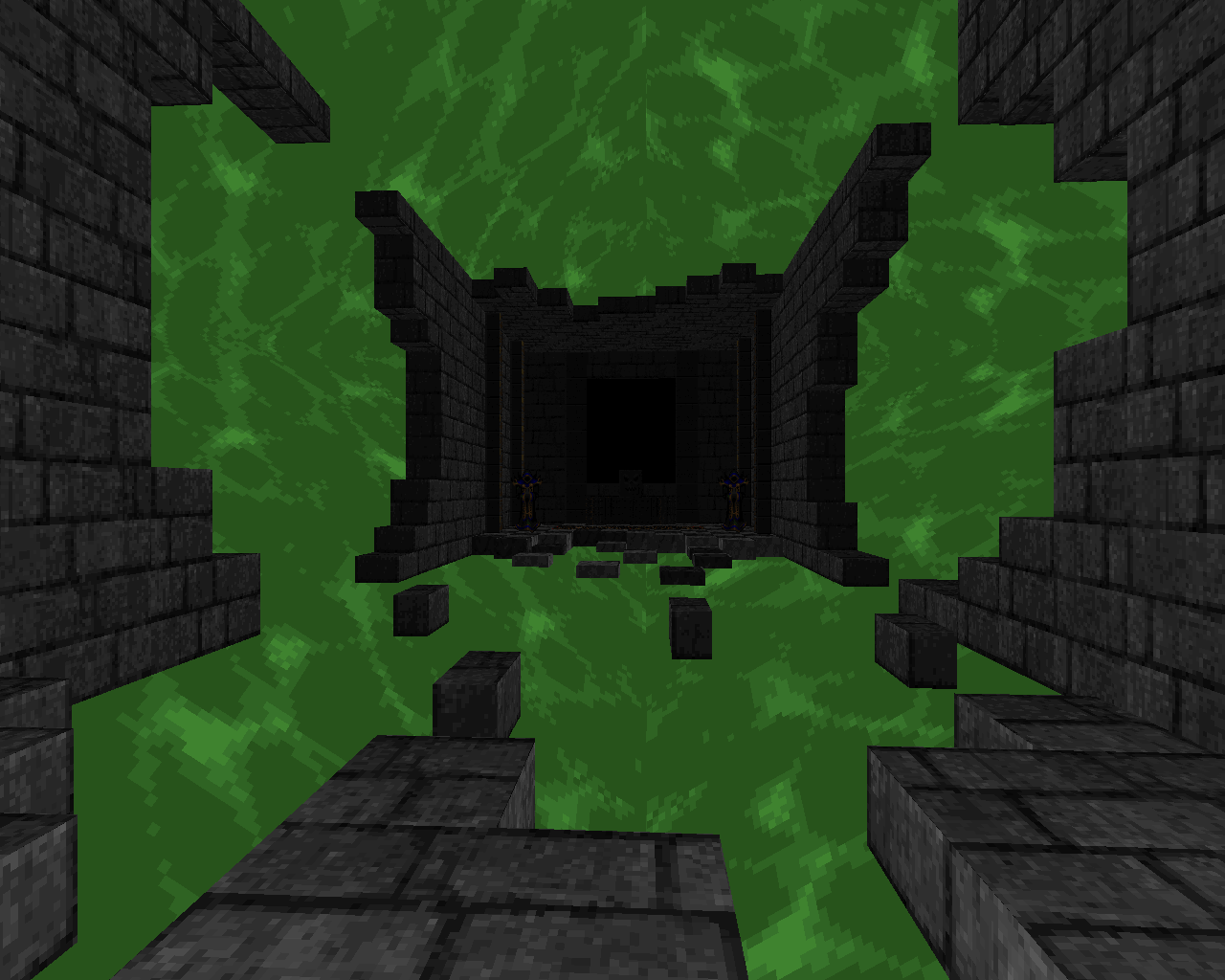
The whole map is like that; it throws one mind-bending thing after another at you, right from the beginning. The sky spins around you at dizzying speeds, rapidly shifting through a rainbow of colors and pulsing light to dark. Platforms and wall details drift up and down with fluid motion, as though they have a life of their own. The tunnel that faces you at the start is smoothly curved, its marble wall textures scrolling unnaturally as they slide the full 360 degrees around the opening. Bricks hang suspended in space, creating precarious paths. Doors hinge open and closed, walls rotate around, bookcases slide across the room and try to kill you. It feels like the laws of physics are being bent, because they are—real-world laws of physics, for one thing, but also Doom’s laws of physics. The Doom engine has a very specific set of things it can do, architecture that can move in specific ways; with Void, those constraints have ceased to exist, and nothing behaves the way it’s supposed to.
The Doom engine has a very specific set of things it can do, architecture that can move in specific ways; with Void, those constraints have ceased to exist
The monster usage is similar. The black and white Imps that face you as you enter the map are just regular Imps, but there’s something creepy about the way they match the checkered wall textures, let alone the fact that they’re two different monsters that behave identically. Much of the map pits you against the Afrits and Dark Bishops from Hexen, emphasizing the former’s erratic, un-Doomlike movements and the latter’s slithery, un-Doomlike attack. All of the sudden, without warning, you’ll find yourself fighting spiders, and then a boss spider; all of the sudden, there’s an evil space marine clone out of nowhere. Because it’s not tied to Doom’s standard bestiary, the map is able to give you something unfamiliar at every turn.
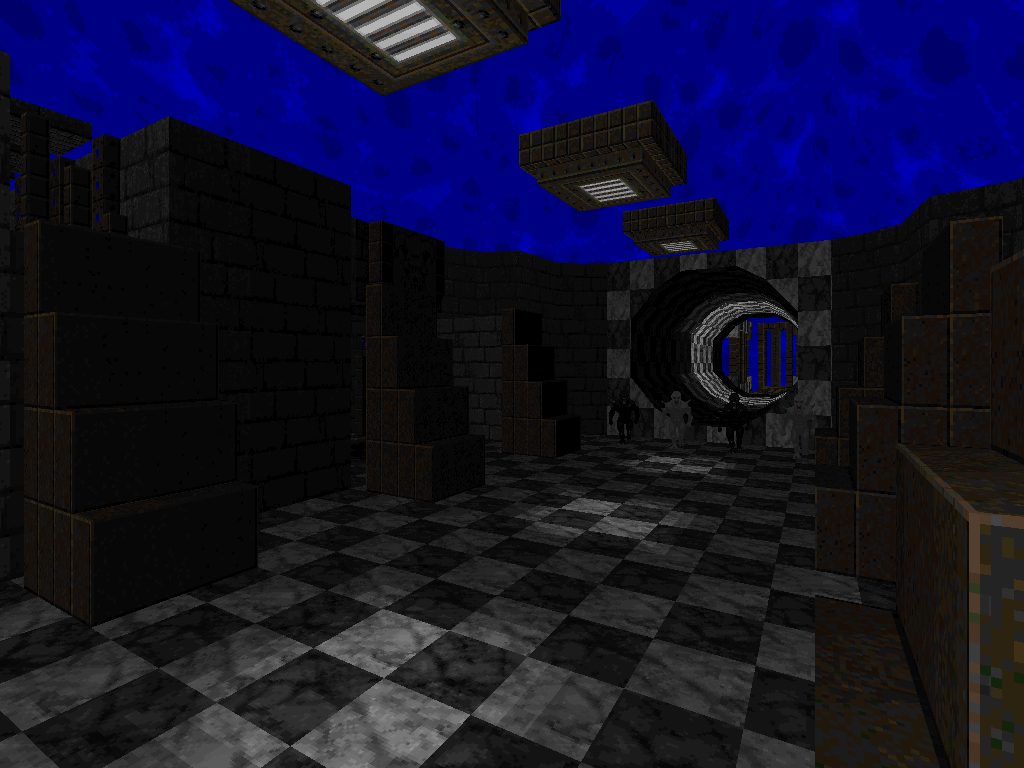
That unfamiliarity is what makes Void tick, and it never lets you get comfortable. Just when you think you’ve gotten used to the look of the map, you’re thrown into a monochrome subworld with a scrolling marble sky and a whole new set of death traps. Later on, you’re tasked with completing Hexen-like puzzles. In one of the map’s most iconic sequences, you’re shrunken down to the size of a rat and have to navigate the tiniest details of the architecture in order to bypass an obstacle. All of these challenges lead up to a boss fight where you have to keep an eye on the shifting architecture as well as your enemies. Most Doom maps in classic formats are designed around the familiar; you’re expected to fine-tune skills you already have, or to rely on your gut understanding of the game’s mechanics to complete challenges. With Void, the whole point is that you never know what’s going to happen. As with any good eldritch event, the world is creepy because it’s wrong, because you can’t count on what you know.
For a player, perhaps, a lot of this uncanniness is happening in the background; the more immediate experience is, “Whoa! This is cool!” But even a modern player would be hard-pressed to go through Void without feeling the unreality of it. The fun of playing a map like this is the way that it messes with your mind, which might be why so many of Void’s successors have horror leanings.
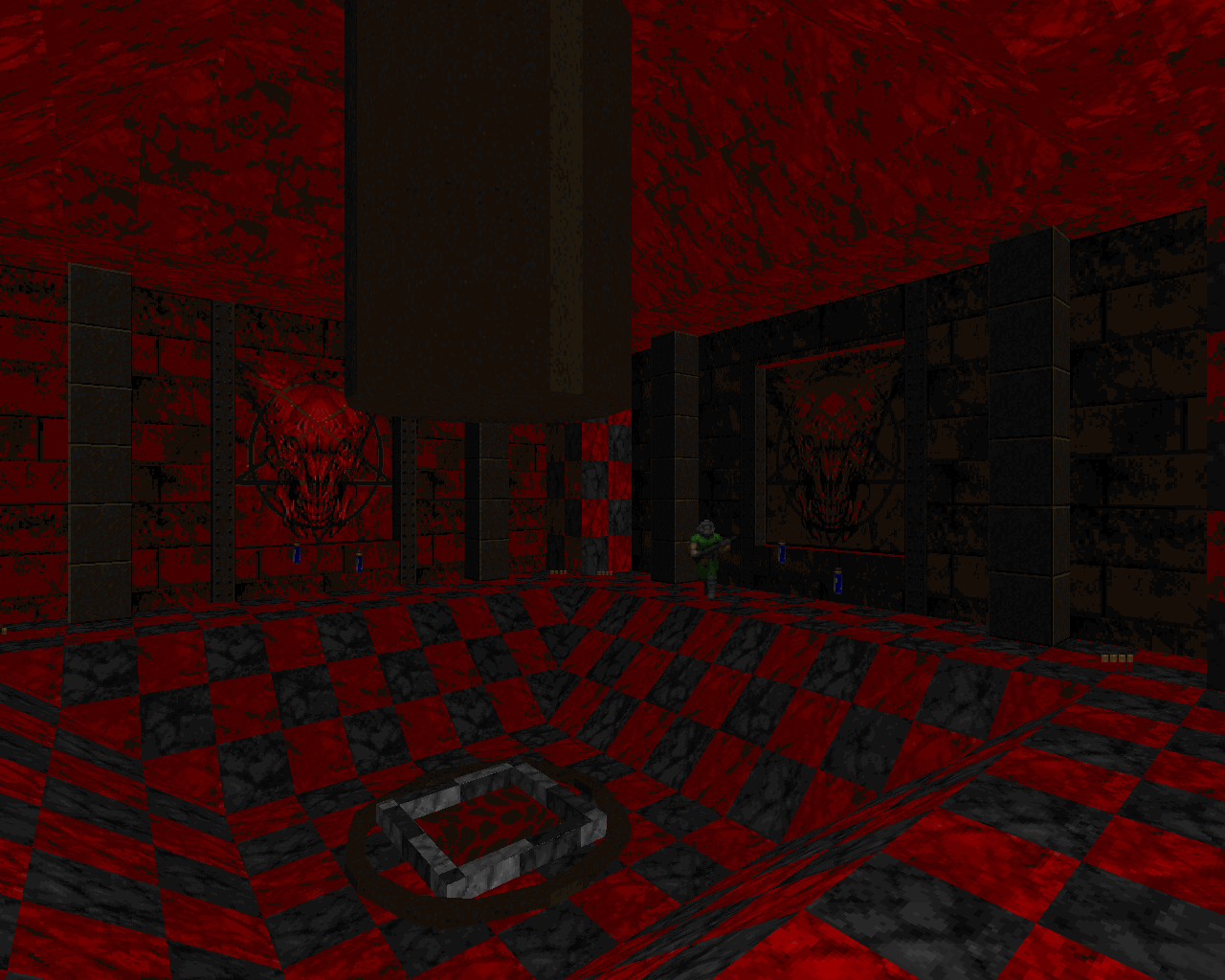
Don’t get me wrong—uncanniness isn’t something that only exists in ZDoom maps. Void probably took a fair amount of inspiration from the surrealism of earlier PWADs like Equinox and Null Space, though its most obvious muse is American McGee’s Alice. Void’s influence extends well beyond ZDoom mapping as well—hell, how many classic-styled maps have you seen that created their eerie atmosphere by having their architecture floating mysteriously in some sort of void space? Any Doom map that makes a deep effort to unsettle the player with its strangeness is likely tapping into Void’s energy to some degree, directly or indirectly. That said, ZDoom provides a powerful set of tools for conveying these emotions.
More modern GZDoom maps can’t simply rely on the port’s features feeling new; the fact that you have fog or bobbing platforms in a Doom map isn’t especially uncanny anymore, because people have seen it plenty of times. Modern mappers have to keep delving deeper—consider Shadows of the Nightmare Realm with its disturbing music, pervasive darkness, complex portal trickery, and monsters appearing out of thin air, all supplementing many of GZDoom’s more basic features to help make the maps feel unsettling. Creating the uncanny is a big picture thing, and it requires all sorts of level design knowledge that isn’t port-specific…but being able to bend reality at will certainly helps.
-
 RTC-3057 - Team Future (2004)
RTC-3057 - Team Future (2004)
No One Can Hear You Scream
RTC-3057 takes a much more realist approach than Void does, but it evokes a lot of similar feelings. Then again, it’s a science fiction story in a video game, so “realist” is a pretty relative term. Both WADs use the vividness of their environments as a way to get deeper inside the player’s head, calling up a sense of dread, wonder, and mystery. But while Void uses the strikingly un-Doomy details of its world design to make everything feel unreal, RTC-3057 uses them to make everything feel hyper-real, so that every empty hallway feels thicker with tension and every monster seems that much scarier.
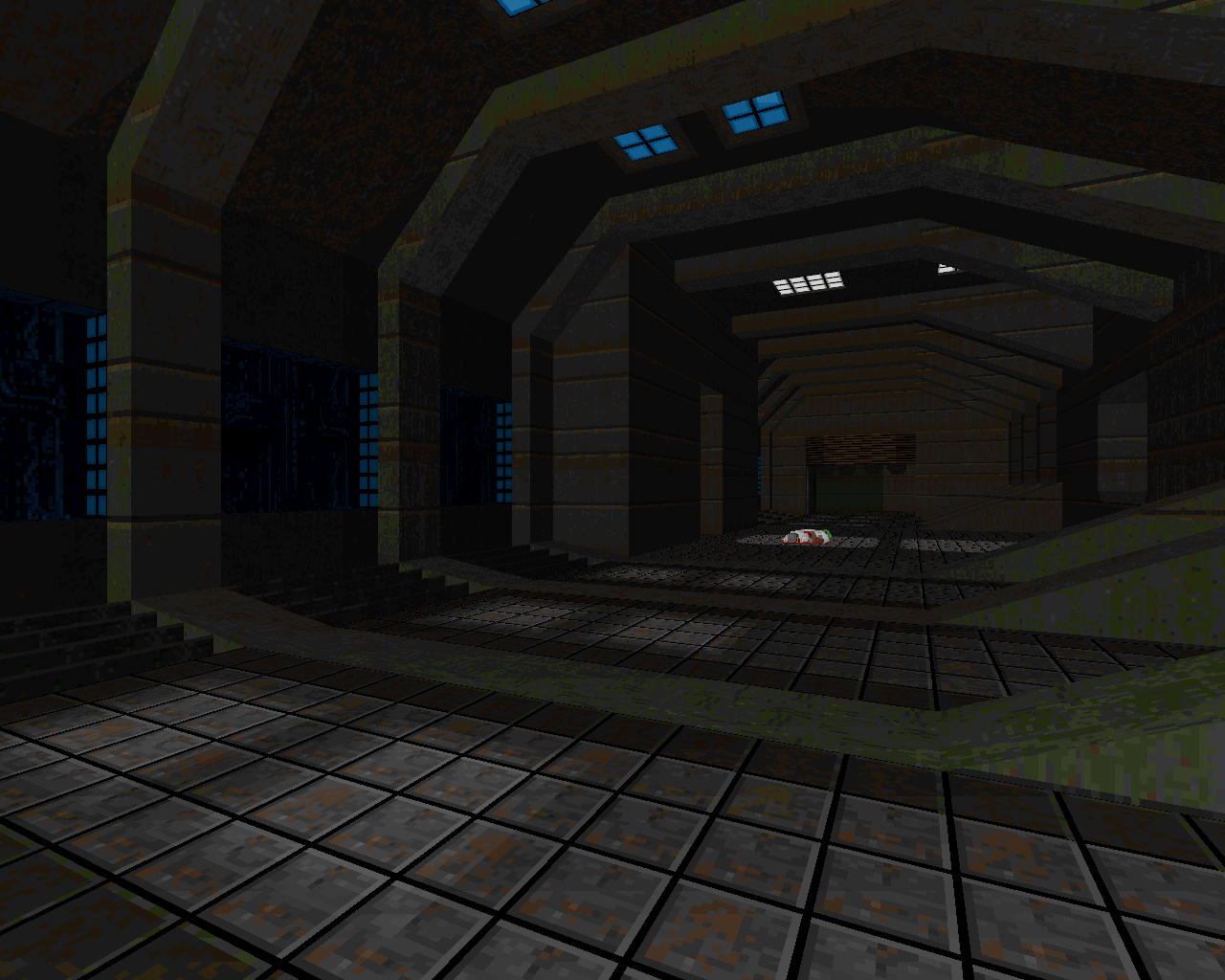
The hub-based episode deploys a large number of advanced features, but in a targeted way. Slopes and 3D floors are used to create realistic ship structures and furniture. Fans whirl ominously, and overhead fixtures cast hazy light through the air underneath them. Translucent windows grant views into other parts of the spaceship, but many of the details are obscured. As with Void, the music is in a higher-quality sound format than MIDI, which helps immerse the player and make the game feel like it’s not the familiar territory of Doom.
While Void uses the strikingly un-Doomy details of its world design to make everything feel unreal, RTC-3057 uses them to make everything feel hyper-real
Tastefully scattered fragments of people’s digital logbooks advance the story and make you feel even more like you’re part of a real world. This immersive realism is one of the things that ZDoom ports are best at, and it really pays dividends when a key moment in the story demands an emotional response—like, say, the vengeful pleasure of dumping a Cyberdemon out of an airlock.



